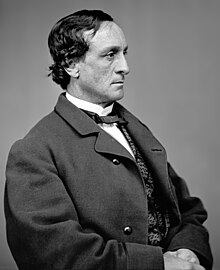 We all know John Wilkes Booth, the assassin of President Abraham Lincoln. And then there was Edwin Booth, the great Shakespearean actor known for his performances of Hamlet. But there was another Booth brother in the acting business, and you won’t believe where he showed up in this edition of Unexpected Lincoln.
We all know John Wilkes Booth, the assassin of President Abraham Lincoln. And then there was Edwin Booth, the great Shakespearean actor known for his performances of Hamlet. But there was another Booth brother in the acting business, and you won’t believe where he showed up in this edition of Unexpected Lincoln.
Junius Brutus Booth, Jr. was the eldest son and namesake of the great British/American actor (not surprisingly named Junius Brutus Booth, Sr.). The Senior Junius Booth was considered one of the greatest actors of his time, that is, when he wasn’t having mental health and drinking issues. After abandoning his wife and son in England, Junius Senior absconded to the United States with Mary Ann Holmes, a flower girl he has just met. They had twelve children together, most notably the three actor brothers and their sister Asia. Junius Junior was the least known of the three, an okay actor that never reached the fame (and infamy) of his two younger siblings. Only once did the three brothers perform together on stage, in Julius Caesar (ironically, or perhaps presciently, Caesar and Brutus entered into John Wilkes’s thought processes when contemplating the assassination of Lincoln).
Booth, Jr., like all of the Booth actors, had an erratic life, including three marriages. The first was brief, the second died giving birth to their only child (who somehow lived a long life, dying at age 78 in 1937). Booth, Jr. was out in California for much of the Civil War, returning east in 1867 to become manager of the Boston Theatre, and married an Australian-born widow, Marion Agnes (Rookes) Perry, who was also an actress and dancer thereafter known as Agnes Booth.
Here’s where the unexpected comes in.
While managing the Boston Theatre (in, obviously, Boston, Massachusetts), Booth Jr. started a hotel and summer theater operation in Manchester-by-the-Sea, a Massachusetts seacoast town on Cape Ann north of Boston. [BTW, there was a critically acclaimed film of the same name starring Casey Affleck in 2016 that is definitely worth seeing]. I’m quite familiar with Manchester-by-the-Sea as it’s close to my hometown and my grandmother lived there for 102 years. I was completely unaware, however, that the aforementioned Junius Brutus Booth, Jr. had a hotel and summer stock theater there and, in fact, is buried in the cemetery I had passed hundreds of times.
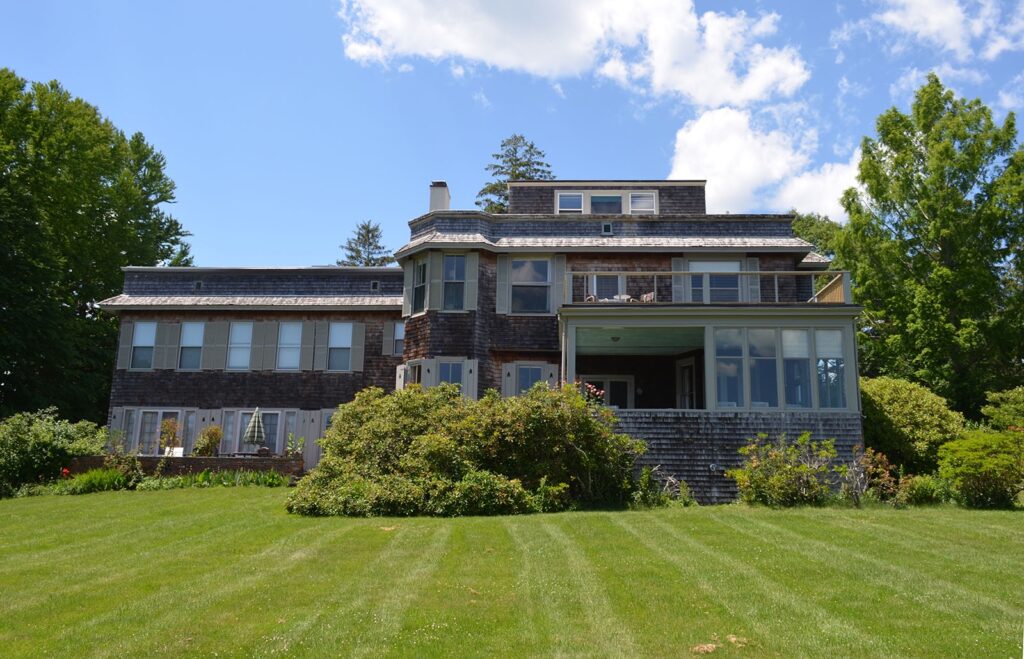
Having recently discovered this fact, I made a beeline for Manchester on my recent road trip to New England. And there it was. First, the hotel. On the narrow road just before the famous Singing Beach was an old house (above) that I had barely noticed on my many walking trips down that road. The main house is where Junius and Agnes lived while they let out rooms in the hotel extension next door. Most of the hotel portion burned down early in the 20th century, but a small part of it remains as the residence of the current owners, who now make the main house (the original that survived the fire) available for rental at a hefty price per night. It’s a short walk to the beach. This is the house that Booth built.
After finding the house (which, to be honest, could use some landscaping work), I drove up the road to the Rosedale Cemetery. I had seen a photo of the gravestones on Find-a-Grave (an incredibly useful website for finding dead people) but it didn’t give a location in the cemetery. This was the third cemetery I visited on this particular road trip; the first two conveniently told me the exact location. This one didn’t but the photo seemed to show the graves near a granite wall, so I circled the cemetery perimeter looking for a granite edge. Almost giving up (the cemetery is mostly ringed by a wrought iron fence), I suddenly noticed the unique shape of Junius, Jr.’s tombstone. Quickly pulling over into a miraculously available parking spot, I confirmed that this was the correct spot. In this section, the wrought iron fence sat atop a short granite wall base.
Junius Booth’s gravestone is literally an open book, which is how I was able to locate it so quickly. The book appears open to its middle pages and sits on a short pedestal such that the top is maybe three feet off the ground. The inscription is worn with age but still legible if you look closely. Oddly, it says he died in September 1884 while all the other information says he died in 1883 at age 61. Next to him is the scroll-like gravestone of his last wife, Marion Agnes Schoeffel. Yes, that’s Agnes Booth. Even though she remarried to a man named John B. Schoeffel, Agnes chose to be buried next to her more famous second husband and three of their children. The next Junius in line, their son Junius Brutus Booth III, died by suicide in 1912 and is buried in Brightlingsea, Essex, England.
Like his brother Edwin, Junius Jr. had been hauled into Old Capitol Prison in Washington, DC after their more infamous brother John Wilkes had assassinated Abraham Lincoln. Both Edwin and Junius Jr. were interrogated and released, and both went on to continuing careers in the theater after short hiatuses. By the way, Edwin had an encounter with another Lincoln, having famously saved the life of Robert Lincoln at a train station in late 1864 or early 1865. See more about that incident here. Junius ended up in New England, and the rest, as they say, is history.
Unexpected Lincoln is on the trail of other little-known connections to Lincoln, including more from my New England road trip that I’ll relate soon.
Photo credits: Top = Junius Brutus Booth Jr. by Mathew Brady, Library of Congress Prints and Photographs Division; Second from Top: Masconomo House, Manchester, MA from rental listing; Grouping = Booth gravestones, Rosedale Cemetery, Manchester, MA by David J. Kent

Lincoln: The Fire of Genius: How Abraham Lincoln’s Commitment to Science and Technology Helped Modernize America is available at booksellers nationwide.
Limited signed copies are available via this website. The book also listed on Goodreads, the database where I keep track of my reading. Click on the “Want to Read” button to put it on your reading list. Please leave a review on Goodreads and Amazon if you like the book.
You also follow my author page on Facebook.
David J. Kent is President of the Lincoln Group of DC and the author of Lincoln: The Fire of Genius: How Abraham Lincoln’s Commitment to Science and Technology Helped Modernize America and Lincoln: The Man Who Saved America.
His previous books include Tesla: The Wizard of Electricity and Edison: The Inventor of the Modern World and two specialty e-books: Nikola Tesla: Renewable Energy Ahead of Its Time and Abraham Lincoln and Nikola Tesla: Connected by Fate.







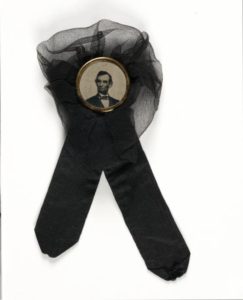 April 14, 1865, had been a busy day for Abraham Lincoln. The previous week he had walked through Richmond, arriving back in Washington to a telegram saying the South’s main army would fight no more. On this Good Friday, Lincoln felt rejuvenated, relieved that the war would soon end and he could focus his second term on reconstructing the Union. The day started with a welcome visit. Captain Robert Lincoln, the president’s son, returned to the city in time to join Lincoln for breakfast. Robert brought firsthand witness to the recent surrender of Confederate General Robert E. Lee to Union General Ulysses S. Grant at Appomattox Courthouse. Many formal interviews later (including with former New Hampshire senator John P. Hale, whose daughter Lucy was later discovered to be secretly engaged to John Wilkes Booth), Lincoln held a cabinet meeting in which he related a recurring dream of a ship “moving with great rapidity toward a dark and indefinite shore.”
April 14, 1865, had been a busy day for Abraham Lincoln. The previous week he had walked through Richmond, arriving back in Washington to a telegram saying the South’s main army would fight no more. On this Good Friday, Lincoln felt rejuvenated, relieved that the war would soon end and he could focus his second term on reconstructing the Union. The day started with a welcome visit. Captain Robert Lincoln, the president’s son, returned to the city in time to join Lincoln for breakfast. Robert brought firsthand witness to the recent surrender of Confederate General Robert E. Lee to Union General Ulysses S. Grant at Appomattox Courthouse. Many formal interviews later (including with former New Hampshire senator John P. Hale, whose daughter Lucy was later discovered to be secretly engaged to John Wilkes Booth), Lincoln held a cabinet meeting in which he related a recurring dream of a ship “moving with great rapidity toward a dark and indefinite shore.”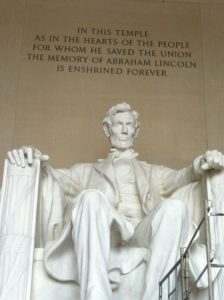 Abraham Lincoln had a busy day, this April 11, 1865. There were meetings, then more meetings, and proclamations (and more proclamations), a pass for his friend, and a request to General Grant. That evening he would give
Abraham Lincoln had a busy day, this April 11, 1865. There were meetings, then more meetings, and proclamations (and more proclamations), a pass for his friend, and a request to General Grant. That evening he would give 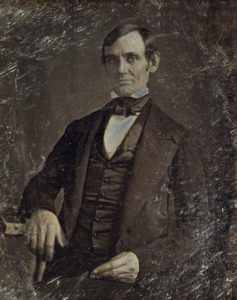 On April 4, 1860, a mere six weeks before he would be nominated as the Republican candidate for president, Abraham Lincoln wins a case formally known as
On April 4, 1860, a mere six weeks before he would be nominated as the Republican candidate for president, Abraham Lincoln wins a case formally known as 






